'Captain America: Civil War' Comics vs. Movies: The 10 Biggest Differences (SPOILERS!)
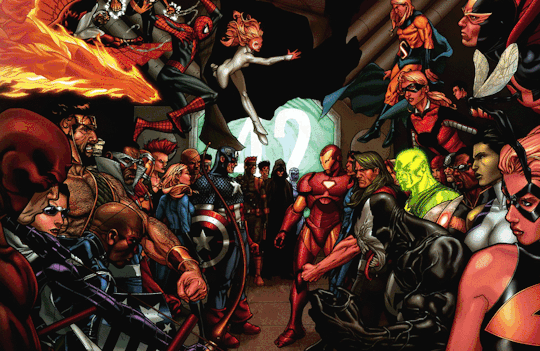
Marvel’s ‘Civil War’ lineup on screen and on the page (Images: Marvel/Disney)
Warning: This story discusses major plot points from the new film. Please stop reading if you wish to remain spoiler-free.
Captain America: Civil War is a blockbuster Marvel movie released last week. Civil War was a blockbuster Marvel Comics storyline released in 2006. The broad strokes of both movie and comic series are the same: a botched mission results in too much collateral damage, spurring the government to try to regulate superheroes, leading to a schism between Iron Man and Captain America, and resulting in some of our favorite costumed characters beating the snot out of each other. However, in adapting the idea from page to screen, the filmmakers deviated from the comics for various reasons. Read on for the 10 top differences between movie and book.
1. Mission Gone Wrong
In the movie, the cumulative effect of destruction tied to superheroes’ actions in New York (The Avengers), Washington, D.C. (Captain America: The Winter Soldier), Johannesburg and Sokovia (Avengers: Age of Ultron), and Lagos (Civil War) leads to the drafting of the Sokovia Accords.
Related: Who’s Who in ‘Captain America: Civil War’
In the comics, the main triggering event came when the C-list New Warriors — a team of young heroes trying to enhance their profile by appearing on a reality-TV show — engage a supervillain team without calling for backup. Their half-cocked assault ends tragically when one of the bad guys, Nitro, uses his explosive power to level the surrounding city, including a nearby elementary school. That turns public opinion against the superhero community.
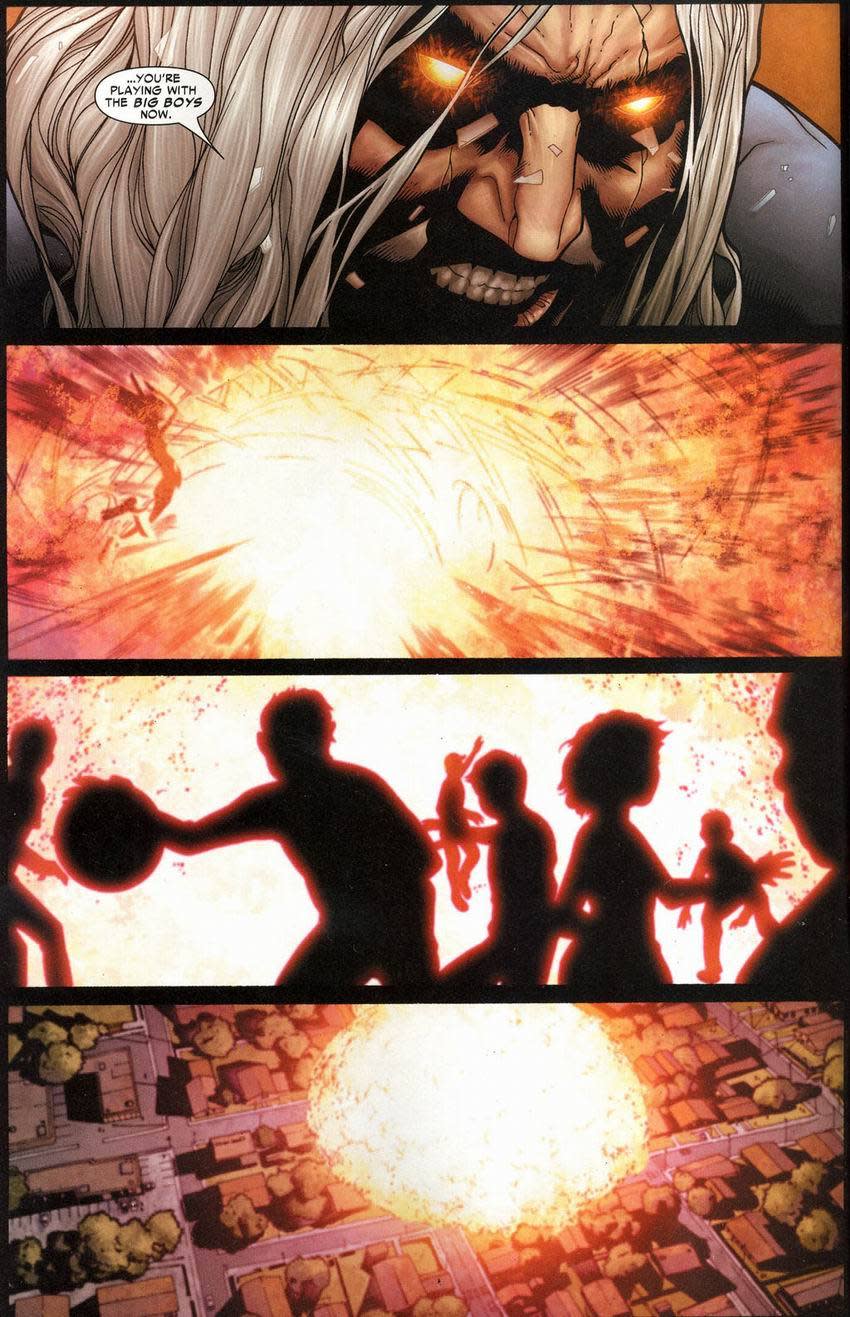
Nitro lethal detonation (Image: Marvel)
Miriam Sharpe, the mother of one of the school victims becomes the face of public outcry, haranguing Tony Stark into believing that the superheroes need some kind of regulation. She’s depicted as white and her son was a child.
In the film, the character of Miriam is played by Alfre Woodard, and she confronts Tony (Robert Downey Jr.) about losing her college-aged son, who was volunteering in Sokovia and killed in the Avengers’ battle with Ultron.

Miriam in the comics clutches photo of son; Alfre Woodard plays Miriam in the film (Images: Marvel/NBCUniversal)
2. Government Oversight
On screen, the Sokovia Accords, drafted by the United Nations in the wake of the Ultron catastrophe, seek to have all “enhanced individuals” register with the international body and then effectively serve as a police force under the control of a U.N. panel. The idea is championed by Tony Stark and his loyalists, guilt-racked over the civilian deaths resulting from their crime-fighting and seeking a way to prevent future casualties. But Cap (Chris Evans) and his crew chafe at the idea of giving up their autonomy.
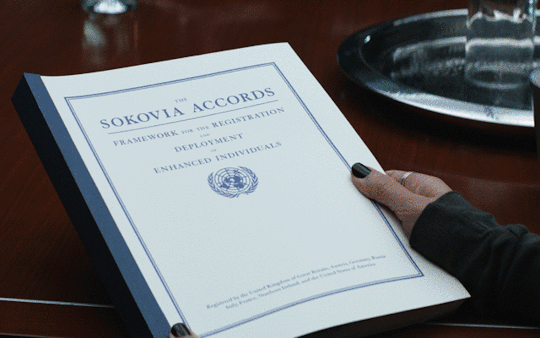
Sokovia Accords divides the MCU in the movie, replacing the Superhero Registration Act of the comics (Images: Disney/Marvel)
In the comics, the Iron Man-Captain America divide comes over the Superhuman Registration Act. The U.S. government wants all heroes to sign on as weapons of mass destruction, give up their secret identities, and become federal operatives. Iron Man sees this as a way to curry favor with a public growing distrustful of the costumed crusaders. But Captain America sees it as an issue of civil liberty and doesn’t want to compromise his values.
3. Team Rosters
Ultimately, the movie’s Team Cap features Falcon (Anthony Mackie), Winter Soldier (Sebastian Stan), Hawkeye (Jeremy Renner), Scarlet Witch (Elizabeth Olsen), and Ant-Man (Paul Rudd). Team Iron Man includes Black Widow (Scarlett Johansson), War Machine (Don Cheadle), Vision (Paul Bettany), Black Panther (Chadwick Boseman), and Spider-Man (Tom Holland).
In the comics, Iron Man is joined by Spider-Man, Hank Pym (the original Ant-Man, now in the guise of Yellowjacket), Reed “Mr. Fantastic” Richards (leader of the Fantastic Four), his Fantastic Four compadre the Thing, She-Hulk, and Black Widow, as well as the Thunderbolts, a team of supervillains that includes Venom. War Machine doesn’t appear.
Related: A Comprehensive List of Every Hero-on-Hero Fight in ‘Civil War’
Cap’s main team of “Secret Avengers” included Falcon, Daredevil, Hercules, Fantastic Four siblings Invisible Woman and Human Torch, the massive Goliath, Luke “Power Man” Cage, Spider-Woman, and the Punisher. While Hawkeye and Scarlet Witch were absent from the comics, Vision aligns with Cap, and at one point helps disable Tony’s Iron Man suit.
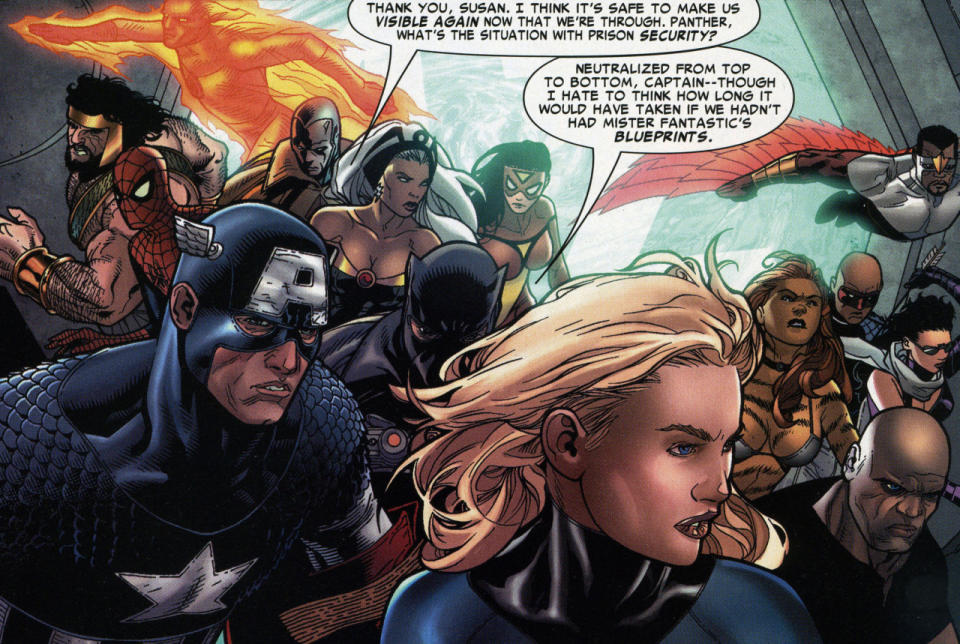
Team Cap in action in the comics (Image: Marvel)
The comics and movie both take some of the most powerful heroes off the board to avoid tilting the balance. Hulk and Thor are MIA (although a Thor clone makes a brief, calamitous appearance), and most of the X-Men are hunkered down under guard at Xavier’s School for Gifted Youngsters. One major difference between the film and the source material: Black Panther initially stays neutral in the comics, but he eventually sides with Captain America.
4. The Fallen Giant
In the movie, Scott Lang’s Ant-Man breaks out his big gimmick during the airport confrontation, reversing his shrinking shtick and turning into the towering Giant-Man.
In the comics, Hank Pym, the original Ant-Man, harnessed his Pym Particles to become Giant-Man when he co-founded the Avengers in the 1960s (according to Stan Lee, there was a practical reason for the transformation: to fit into a lineup that included heavyweights like Thor and Hulk, Ant-Man needed a power boost and, literally, bigger profile).
As screenwriters Christopher Markus and Stephen McFeely explain to Yahoo Movies, they campaigned to get Giant-Man in the movie. “Theoretically he had the power in the comic, and the ant thing can only go so far in a big roundhouse fight,” Markus says. “Also, when you start with 17 or however many, 12, super-powered people hitting each other, how do you ratchet it up?
Related: ‘Civil War’ Screenwriters Answer 5 Burning Questions
“Disney, to their credit, they were very much like, ‘Let’s do a real, grounded, issue-driven, superhero-conflict fight movie,’ Markus continues. "And we were like, 'We want to put a 100-foot-tall guy in it.’”
In the Civil War comics, Pym/Yellowjacket is Team Iron Man and a different Ant-Man (Eric O’Grady) appears in a cameo. There is a confrontation in the Civil War comics in which Cap’s gargantuan comrade, Goliath (Bill Foster, who also did a stint as Giant-Man), is killed during a major fight between the two sides. His death is a galvanizing moment in the series, causing many of Iron Man’s allies to break ranks and defect to Team Cap, including Spider-Man.
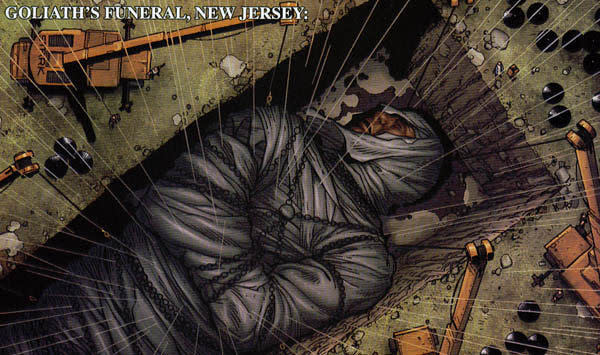
Goliath interred in ‘Civil War’ comic (Image: Marvel)
5. Spider-Man’s Allegiances
Speaking of Spidey, he represents one of the larger divergences between film and comics. On screen, he is recruited at home in Queens by Tony Stark and joins the fray at the airport brawl. After proving his mettle, Tony sends the dinged-up web-slinger back home.
Related: Breaking Down the ‘Civil War’ Credits Sequences
Spider-Man has a much more complex role in the Civil War comics storyline. He joins Tony’s side believing that the Superhero Registration Act will win back the public trust. In one of the major developments in the books, Spider-Man appears at a press conference and reveals his fiercely protected true identity as Peter Parker (causing conniptions for Parker’s Daily Bugle boss, avowed Spidey hater, and staunch Registration Act advocate J. Jonah Jameson). He dons the Iron Spider suit to fight former friends like Cap and Daredevil.
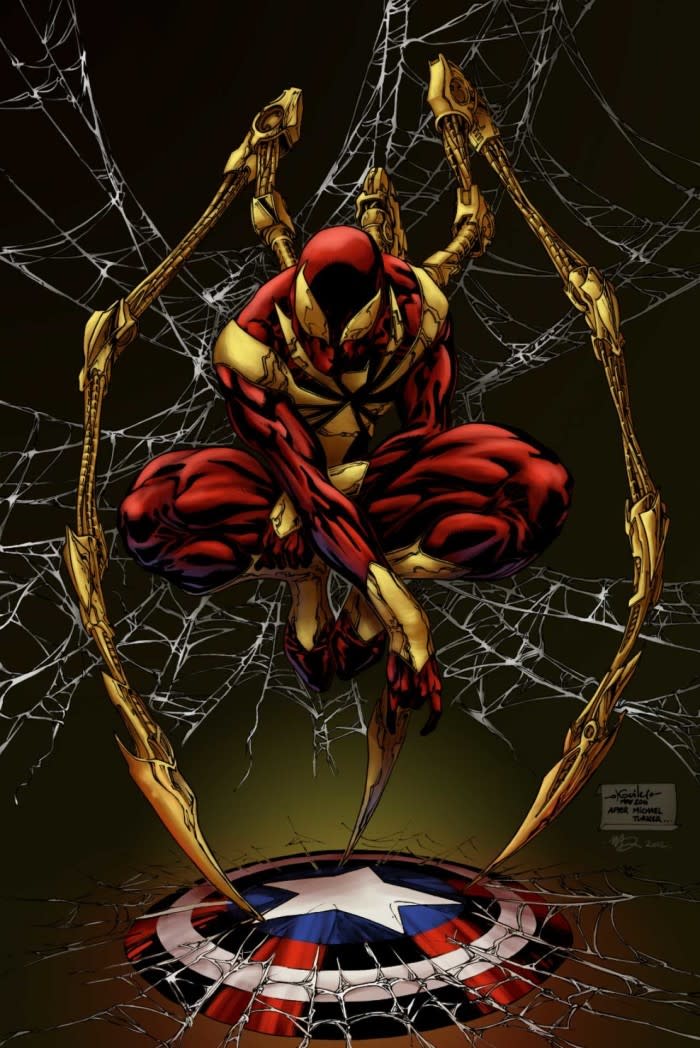
Spidey in the Stark-designed Iron Spider armor (Image: Marvel)
But he’s soured by the death of Goliath and switches sides.
6. Winter Soldier’s Role
In the film, Bucky Barnes/Winter Soldier plays a pivotal role. His struggle to overcome his brainwashing and move beyond his past as a HYDRA assassin are central to the plot. He’s wrongly blamed for a bombing that helps set the film’s conflict in motion and makes him a target of Black Panther. Steve Rogers believes in his old buddy and stands by him. But Iron Man distrusts Bucky, and is consumed by rage when their nemesis Zemo reveals footage that shows that the Winter Soldier slayed Tony parents, Howard and Maria Stark.
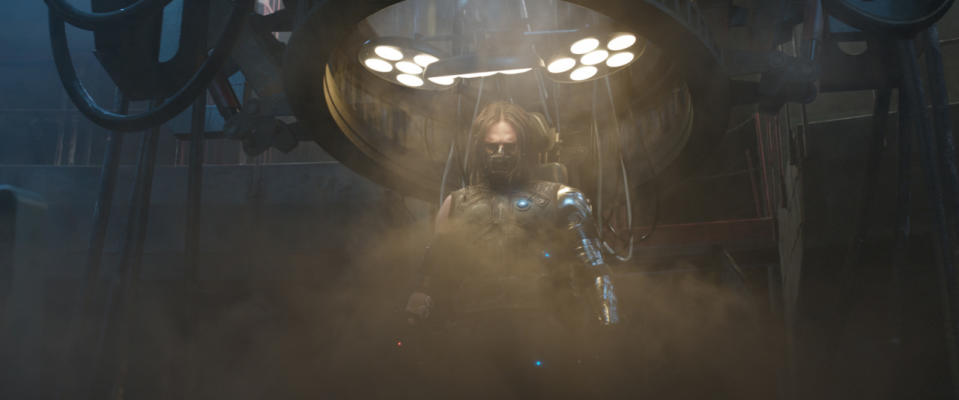
The Winter Soldier is key to the movie’s plot (Image: Disney)
The Winter Soldier has a much less critical role in the Civil War books. While he sides with Cap, he’s not nearly as central to the plot as he is in the film, relegated to a tie-in series tangential to the main arc. However, after the presumed assassination of Steve Rogers (more on that below), Bucky picks up the shield and becomes the new Captain America, which is another story (and maybe movie?).
As for the deaths of the Starks, the Winter Soldier had no such role in the comics and their demises weren’t part of the Civil War story. Per Marvel canon, however, the Starks did die in a suspicious car crash that may have been caused by any one of Howard’s many enemies (there’s even a chance Howard faked his death, but let’s not go down that comic-book rabbit hole).
7. Black Panther’s Origin
As noted above, the Panther ultimately sides with Captain America in the comics. The other huge difference has to do with his provenance. In the comics, decades before the Civil War arc, T’Challa becomes Black Panther after his father, King T’Chaka, is killed by the mercenary Ulysses Klaw, who is seeking Vibranium in their African nation of Wakanda.
Related: Meet Black Panther—The MCU’s Latest Breakout Hero
In the film, of course, T’Challa and T’Chaka are part of a United Nations delegation that gets bombed. T’Chaka is killed in the explosion and T’Challa reveals himself as the Black Panther as he seeks vengeance on the alleged perpetrator, the Winter Soldier.
8. Zemo
The puppet-master behind much of the cinematic Civil War shenanigans turns out to be Helmut Zemo (Daniel Brühl), a Sokovian who lost everything in that disaster. He manipulates the sparring superheroes up until the very end.
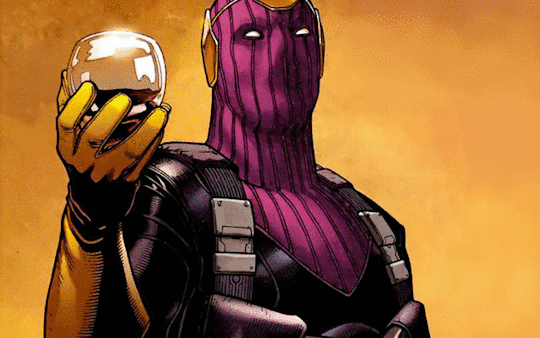
The movie Zemo is drastically different from comic counterpart (Images: Disney/Marvel)
But the movie version is nothing like the comic-book Zemo. Make that Zemos. The original Baron Zemo was a WWII adversary of Captain America. His son emerged in the 1970s as the next Baron Zemo and took the helm of the Thunderbolts team of bad guys. He had shifting allegiances and even turned into an ally of Captain America after the events of Civil War.
9. The Prison
In the film, the rogue heroes are confined to an underwater detention center, which was teased in a tweet from the Disney-run WHIH News. The facility bears a resemblance to the Raft, a multi-level maximum-security prison on an island near New York’s Riker’s Island engineered to detain super-powered inmates. But the Raft wasn’t submersible, like the cinematic version.


The cinematic prison is fortress-like (Images: Disney)
The Civil War comics offer an even more terrifying fate for the enemy superheroes. They get transported through a portal at Riker’s to Prison 42, a lockup engineered by Tony Stark and Reed Richards, and housed inside the Negative Zone, making it virtually inescapable.
10. Aftermath
We’ll have to wait to see how the events of Captain America: Civil War affect the Marvel Cinematic Universe, and which heroes answer the bell for the next big team-up in Avengers: Infinity War — Part 1 (or whatever it winds up being called). But the ending of the film is much different from the comics.
In the climactic comic-book battle, as his forces are about to score the decisive victory, Cap stops fighting and orders his teammates to stand down. “We were beating them, man,” Spidey says. “We were winning back there.” “Everything but the argument,” replies Cap. He takes off his mask and says, “They’re not arresting Captain America, they’re arresting Steve Rogers. That’s a different thing.”

Cap surrenders in ‘Civil War’ comic (Image: Marvel)
That selfless move, to restore the public faith in heroes and start healing the superhero community, ends up with him facing trial. As he approaches the steps of the courthouse, however, shots ring out. And Steve Rogers has fallen. The believed triggerman is Crossbones, who in the comics is closely allied with Red Skull. It turns out, though, that a mind-controlled Sharon “Agent 13” Carter was the perpetrator. Rogers’s death stuns the world — at least until it’s revealed, in typical comic-book fashion, that he wasn’t dead.
Related: ‘Captain America: Civil War’ Preview—Separating Fact From Fiction
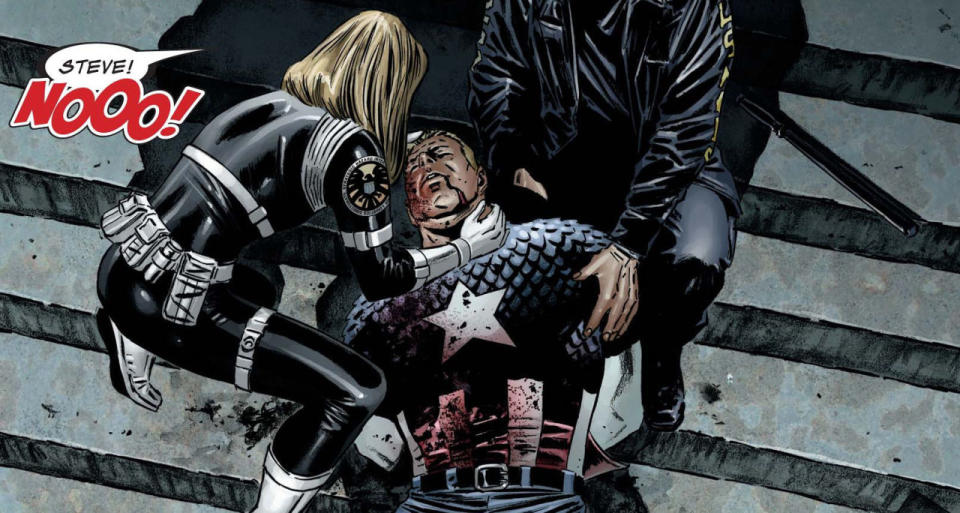
Steve Rogers gunned down (Image: Marvel)
But the filmmakers wanted to avoid the whole death-of-Cap ruse. In the film, Crossbones (Frank Grillo) appears at the beginning and tussles with Cap, but is dispatched quickly. And Bucky is the only one brainwashed on screen, leaving Agent 13 (Emily VanCamp) to serve as Cap’s romantic interest and further distancing the film from the comic books.
“We never really went into this with the intention of killing Cap,” says Markus. “One, because he doesn’t really die, so we weren’t going to do the time bullet [like in the comics]. And there are other movies coming, and it’s like, 'Are you gonna kill him?’ And you get crap for fake-killing people. We fake-killed [Nick] Fury [in Winter Soldier] and it worked pretty well, but… At a certain point you’re lessening the gravity of the movie when you kill somebody, because people are like, 'Oh, now we’re in comic-book world because he’s gonna come back.’ So you get more gravity out of really hurting somebody.” Poor War Machine. Rough ending for a guy who doesn’t even appear in the main Marvel Comics Civil War story arc.

 Yahoo Movies
Yahoo Movies 
